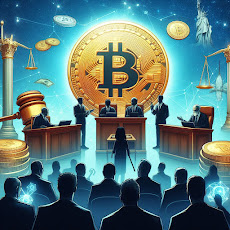In recent years, the blockchain
industry has experienced tremendous growth and disruption, revolutionizing
various sectors with its decentralized and transparent nature. As this
technology continues to evolve, it brings with it a unique set of legal challenges
and complexities.
This book aims to provide a
comprehensive exploration of the legal landscape surrounding blockchain
technology, with a specific focus on dispute resolution mechanisms. The
decentralized nature of blockchain presents novel challenges when it comes to
resolving disputes, as traditional legal frameworks may not always be suitable
or effective. This book seeks to shed light on the regulatory frameworks,
risks, and emerging trends in blockchain law, offering insights into the
evolving field of dispute resolution in this context.
Throughout the pages of this
book, you will find in-depth discussions on the regulation of blockchain
technology, including the current legal frameworks and emerging regulatory
trends in different jurisdictions. We will explore the risks and challenges associated
with blockchain law and provide practical insights into mitigating these risks.
A significant portion of this
book is dedicated to examining the various dispute resolution mechanisms
available in the blockchain industry. From smart contracts to decentralized
dispute resolution protocols, we will delve into the advantages, limitations,
and emerging trends in these mechanisms. Case studies will be presented to
illustrate real-world examples of how these mechanisms have been applied in
practice.
It is important to note that this
book is not intended to provide legal advice, but rather to serve as a
comprehensive resource for legal professionals, researchers, and blockchain
enthusiasts seeking a deeper understanding of blockchain law and dispute resolution.
The content presented is based on the knowledge available at the time of
writing and may not capture the most recent developments in this rapidly
evolving field.
I would like to express my
gratitude to the experts and contributors who have generously shared their
insights and knowledge to make this book possible. Their expertise and
dedication have greatly enriched the content and ensured its relevance to the
current state of blockchain law and dispute resolution.
I hope that this book serves as a
valuable resource and guide for navigating the complex and ever-changing
landscape of blockchain law and dispute resolution. May it inspire further
exploration and innovation in this field, paving the way for effective and
efficient resolution of disputes in the blockchain industry.



0 Comments